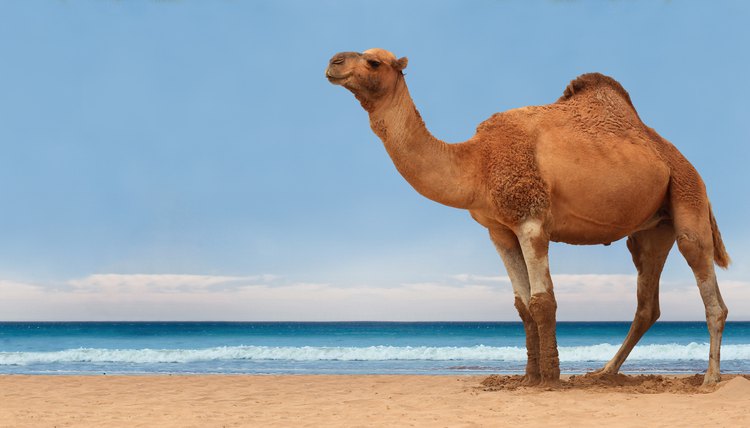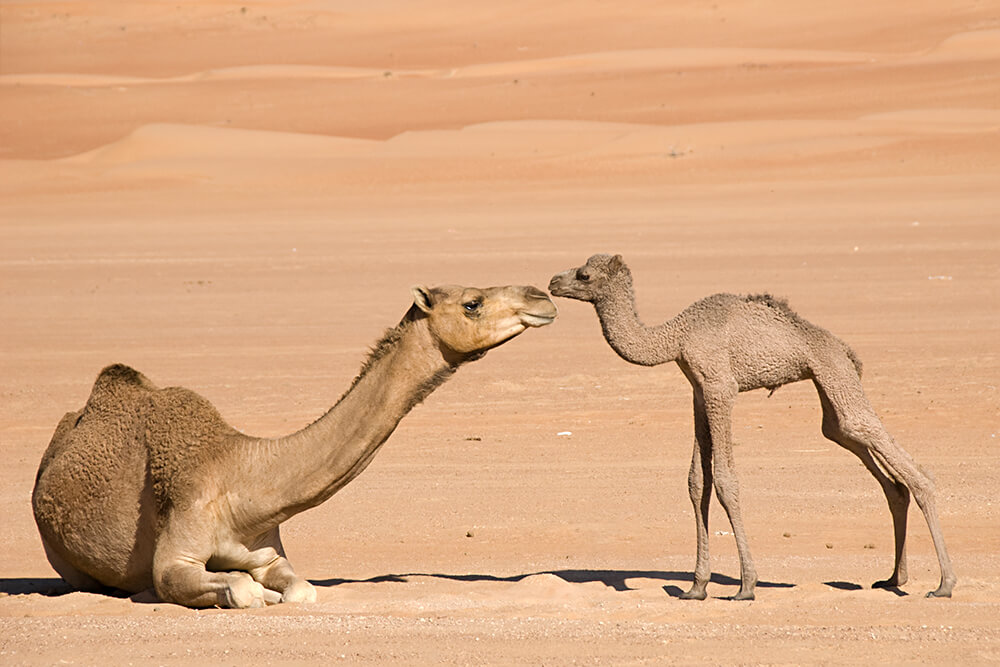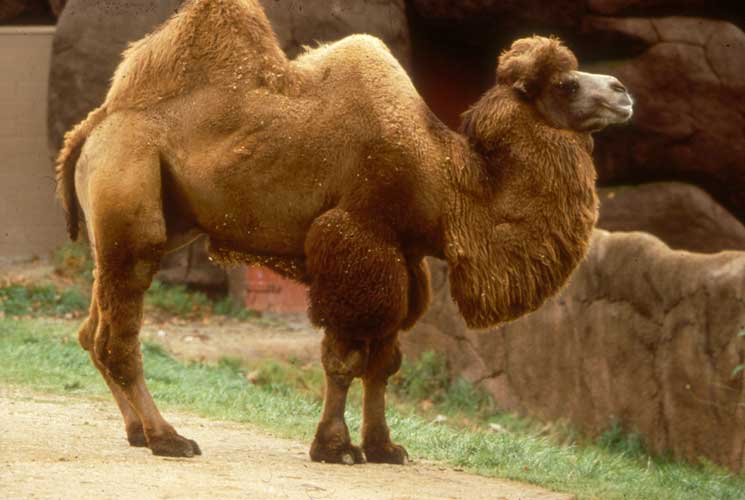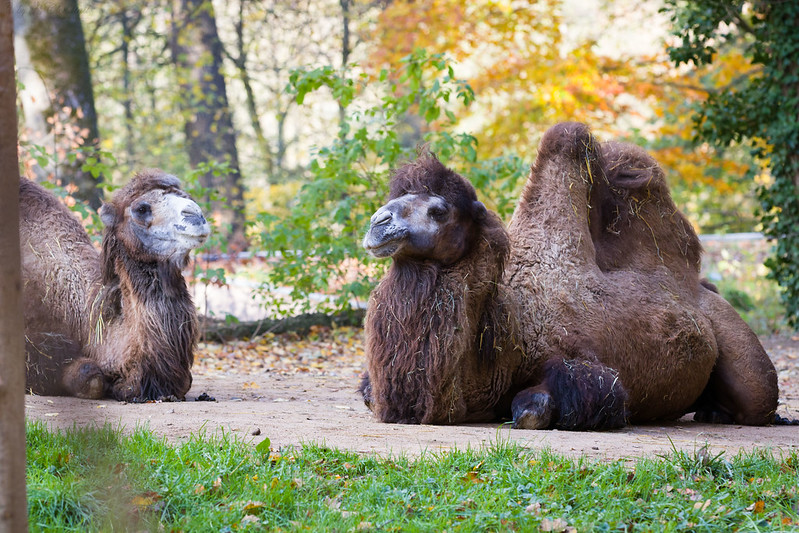Also Read : Camel breeds found in India
A camel bears distinctive fatty deposits known as “humps” on its back. Camels have long been domesticated and, as livestock, they provide food (milk and meat) and textiles (fibre and felt from hair). Camels are working animals especially suited to their desert habitat and are a vital means of transport for passengers and cargo. There are three surviving species of camel.
1. The one-humped dromedary makes up 94% of the world’s camel population.
2. Two-humped Bactrian camel makes up 6%.
3. The Wild Bactrian camel is a separate species and is now critically endangered.
1. Dromedary / Arabian camel

The dromedary, also called the Arabian camel, is a large, even-toed ungulate with one hump on its back. It is the tallest of the three species of the camel; adult males stand 1.8–2 m at the shoulder, while females are 1.7–1.9 m tall. Males typically weigh between 400 and 600 kg, and females weigh between 300 and 540 kg. The species’ distinctive features include its long, curved neck, narrow chest, a single hump (compared with two on the Bactrian camel and wild Bactrian camel), and long hairs on the throat, shoulders and hump. The coat is generally a shade of brown. The hump, 20 cm (7.9 in) tall or more, is made of fat bound together by fibrous tissue.
Dromedaries are mainly active during daylight hours. They form herds of about 20 individuals, which are led by a dominant male. This camel feeds on foliage and desert vegetation; several adaptations, such as the ability to tolerate losing more than 30% of its total water content, allow it to thrive in its desert habitat. Mating occurs annually and peaks in the rainy season; females bear a single calf after a gestation of 15 months.

The dromedary has not occurred naturally in the wild for nearly 2,000 years. It was probably first domesticated in the Arabian Peninsula about 4,000 years ago. In the wild, the dromedary inhabited arid regions, including the Sahara Desert. The domesticated dromedary is generally found in the semi-arid to arid regions of the Old World, mainly in Africa, and a significant feral population occurs in Australia. Products of the dromedary, including its meat and milk, support several north Arabian tribes; it is also commonly used for riding and as a beast of burden.
2. Bactrian camel

The Bactrian camel is a large, even-toed ungulate native to the steppes of Central Asia. It has two humps on its back, in contrast to the single-humped dromedary camel. Its population of two million exists mainly in the domesticated form. Their name comes from the ancient historical region of Bactria.
Domesticated Bactrian camels have served as pack animals in inner Asia since ancient times. With its tolerance for cold, drought, and high altitudes, it enabled the travel of caravans on the Silk Road. Bactrian camels, whether domesticated or feral, are a separate species from the wild Bactrian camel, which is the only truly wild (as opposed to feral) species of camel in the world.
3. Wild Bactrian camel

The wild Bactrian camel is a critically endangered species of camel living in parts of northern China and southern Mongolia. It is closely related to the Bactrian camel. Both are large, double-humped even-toed ungulates native to the steppes of central Asia. Until recently, wild Bactrian camels were thought to have descended from domesticated Bactrian camels that became feral after being released into the wild. However, genetic studies have established it as a separate species which diverged from the Bactrian camel about 1.1 million years ago.
Only about 1,400 camels survive. Most live on the
1. Lop Nur Wild Camel National Nature Reserve in China and a smaller population lives in the
2.Great Gobi A Strictly Protected Area in Mongolia. There are also populations in the
3.Altun Shan Wild Camel Nature Reserve (1986) in Qakilik County, in the Aksai Annanba Nature Reserve (1992), and in
4.Dunhuang Wanyaodun Nature Reserve (now Dunhuang Xihu Wild Camel Nature Reserve) contiguous with the reserve in Qakilik (2001) and a reserve in Mazongshan contiguous with the reserve in Mongolia, all in China.
Also Read